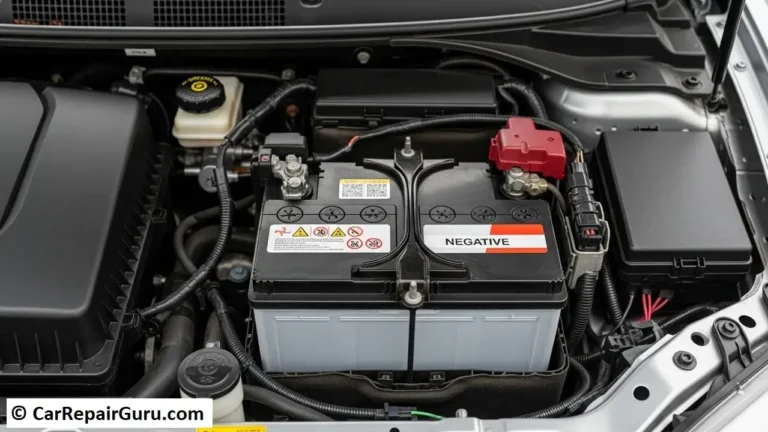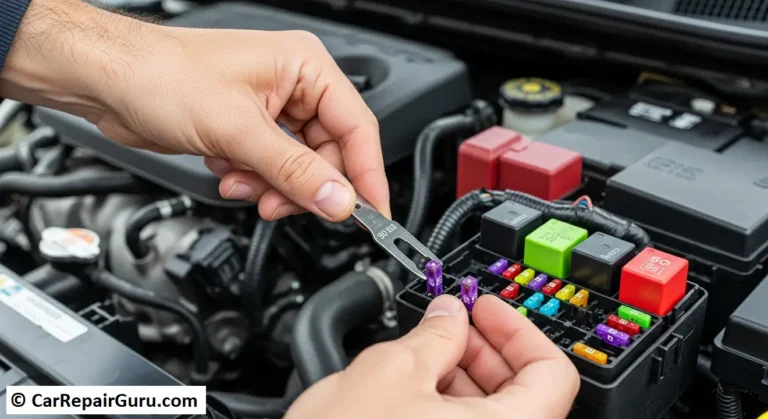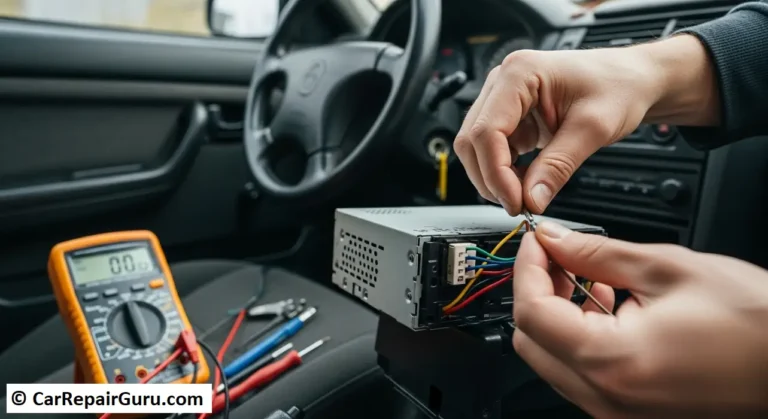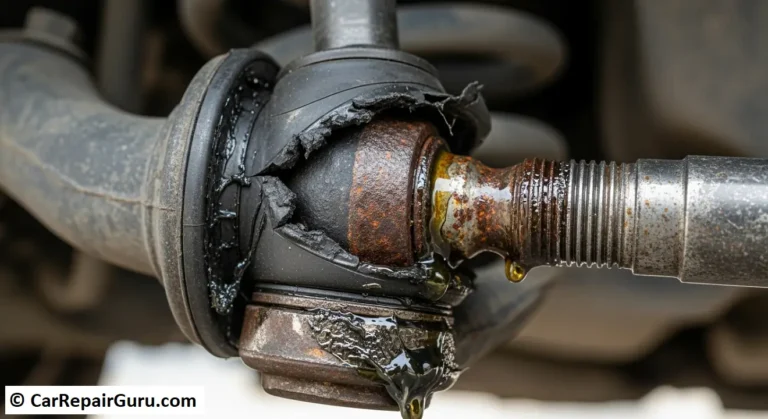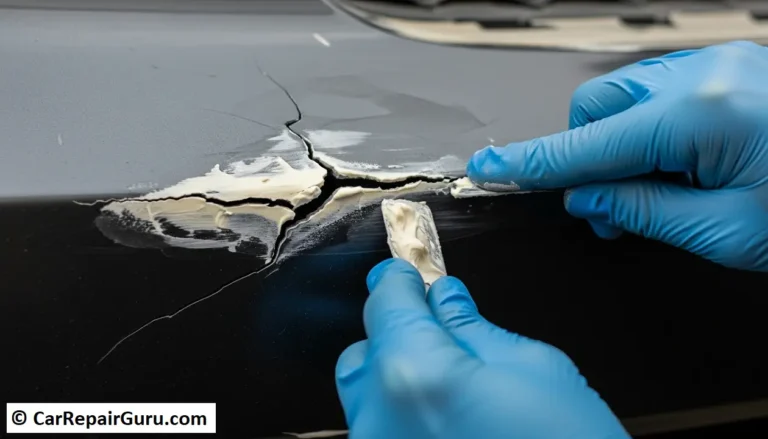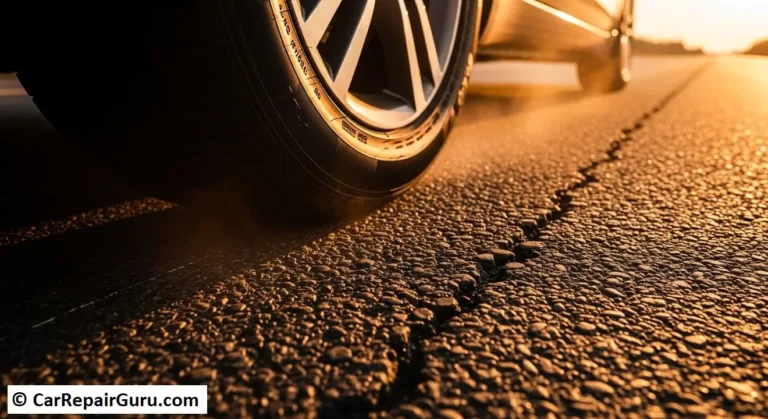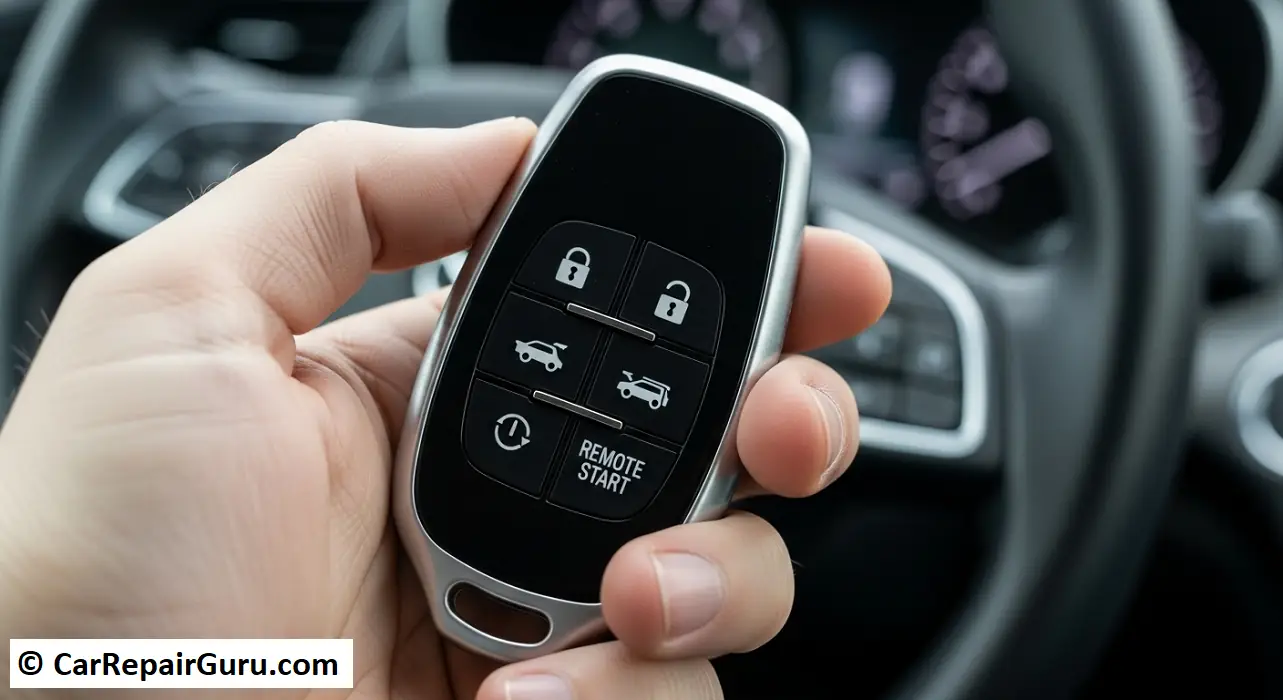
Imagine stepping into a perfectly warm car on a freezing winter morning—or a cool, comfortable cabin on a sweltering summer afternoon—without leaving the comfort of your home or office. That’s the magic of a remote car starter.
More than just a convenience, remote starters for cars have become an essential upgrade for anyone who values comfort, security, and a touch of modern tech in their daily drive. Whether you’re looking for a remote starter for your truck, SUV, or compact commuter, there’s a solution that fits your lifestyle and budget.
In this guide, we’ll break down everything you need to know about remote start systems—from how they work to which models are best for your vehicle. We’ll also explore DIY vs. professional remote starter installation, features to look for, and top tips to make the most of your setup.
Let’s dive in
What Is a Remote Car Starter?
A remote car starter is exactly what it sounds like—a system that lets you start your car from a distance using a remote control, key fob, or even a smartphone app. It might seem like a luxury, but once you’ve used one, it feels like a must-have.
At its core, a remote start system connects to your vehicle’s ignition system. With a simple press of a button, it sends a signal to start the engine—without the key in the ignition. Most systems also allow climate control to kick in, so your car can start heating up or cooling down before you step inside.
But it’s not just about comfort. A remote starter for car models can also enhance safety. For instance, in winter, warming up your engine before driving reduces wear and tear. Some remote car starter kits include keyless entry or security features like engine shut-off timers and anti-theft bypass modules.
There are a wide range of systems on the market—from basic aftermarket remote starters to high-end models with smartphone integration and GPS tracking. And whether you’re driving a compact sedan or looking for a remote starter for truck or SUV, there’s a system designed to work with your vehicle.
The best part? You don’t need to be a tech wizard to use one. With options like DIY remote starter installation kits or professional services, getting set up is easier than ever. If you’ve ever wondered how people preheat their cars in winter or cool them off in summer, now you know—it’s all thanks to the power of a remote car starter.
Key Features to Consider
When shopping for a remote car starter, it’s easy to get overwhelmed by options. But if you know what to look for, picking the right system becomes a whole lot simpler. Whether you’re after convenience, security, or tech-savvy perks, here are the key features you should keep on your radar.
1. Start Range
The range is how far you can be from your car and still start it remotely. Some remote start systems work from a few hundred feet, while premium models boast ranges of up to a mile. If you often park far from your home, office, or apartment building, go for a remote car starter with long-range capabilities. Smartphone-based starters even let you control your car from virtually anywhere.
2. Compatibility with Your Vehicle
Not every remote starter for car models will fit all vehicles. Trucks, SUVs, and luxury cars may require specific bypass modules or advanced wiring setups. Before buying, check if the remote starter kit is compatible with your make and model—or ask your installer to confirm.
3. Security Features
Modern remote car starters aren’t just about convenience—they’re also about peace of mind. Look for systems with keyless entry, engine immobilizers, alarm system integration, and anti-theft protection. Some units include a remote start bypass module that ensures your car stays secure while running without a key.
4. Smartphone Integration
Love controlling things with your phone? Many high-end models now offer smartphone apps. These let you start, lock, and locate your vehicle with just a tap. This feature is especially handy if you’re looking for a remote starter for SUV or larger vehicles that benefit from GPS tracking and longer remote access.
5. Two-Way Remote Feedback
Basic models offer one-way communication—press the button and hope it worked. Two-way systems confirm if your engine started or doors locked by sending a signal back to your remote. For busy mornings or unpredictable weather, that feedback is a game-changer.
6. Extra Functions
Some systems offer trunk release, panic mode, or even automatic defrost activation. Choosing the right remote starter for truck or car depends on how many of these extras matter to you.
When you match your lifestyle with the right features, a remote car starter becomes more than a cool gadget—it becomes a part of your everyday comfort and security.
Installation Options: DIY vs. Professional
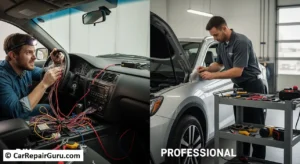
So, you’ve decided to get a remote car starter—great choice! But now comes a big question: should you install it yourself or pay for professional installation?
Let’s break down the pros and cons of each option so you can make the right call for your car and your comfort level.
DIY Remote Starter Installation
If you’re the hands-on type and love working on your vehicle, a DIY remote starter installation might be right up your alley. Many remote starter kits come with detailed instructions, and there are countless online videos and diagrams to guide you through the process.
However, installing a remote start system isn’t always plug-and-play. You’ll need to understand your vehicle’s wiring, ignition, and possibly integrate a bypass module if your car has an anti-theft system. A mistake can result in electrical issues—or even prevent your car from starting.
DIY is usually cheaper—you’ll save on labor—but it takes time, patience, and a solid level of confidence working with car electronics.
Professional Installation
If you’re not confident with wiring diagrams and car electronics, professional remote starter installation is a smart and safe investment. An experienced installer can wire everything correctly, ensure compatibility, and avoid common pitfalls—especially with newer or high-tech vehicles.
Professional shops also have access to advanced tools and software updates that can make the system run more smoothly. And perhaps most importantly, installation often comes with a warranty—something you won’t get with a DIY job.
Whether you’re installing a remote starter for SUV, truck, or car, pros can typically finish the job in a couple of hours and test everything before handing the keys back to you.
Final Thought
Unless you’re experienced and equipped for the task, it’s usually worth the extra cost to go pro. A remote car starter is meant to make your life easier, and the last thing you want is to complicate things with a misstep during installation.
Top Remote Car Starters of 2025
With so many options on the market, finding the best remote car starter in 2025 comes down to your needs: range, features, compatibility, and budget. Below are our top picks that blend technology, reliability, and performance—whether you’re driving a compact sedan, SUV, or truck.
1. Viper 5706V – Best Overall Remote Car Starter
The Viper 5706V continues to dominate in 2025 thanks to its outstanding range and two-way communication. It boasts a one-mile range and LCD remote with real-time feedback, letting you know when your vehicle has started, locked, or unlocked.
✅ Features:
- Two-way LCD remote
- Remote start + keyless entry
- Shock sensor for security
- Optional smartphone app
This remote starter for car models of almost every make is a reliable and secure choice.
2. Compustar CS4900-S – Best for Budget Buyers
If you want performance without breaking the bank, the CS4900-S is a solid pick. This remote start system includes a 3,000-foot range and supports keyless entry—all in a user-friendly setup.
✅ Features:
- Good for cars and light trucks
- Bypass module included
- Compatible with most makes/models
Perfect for DIY remote starter installation if you’re handy.
3. Start-X Remote Starter – Best Plug-and-Play Option
Start-X offers vehicle-specific kits that require no splicing or wire cutting. Great for newer vehicles, this remote car starter connects directly to your OBD2 port and is compatible with factory remotes.
✅ Features:
- DIY-friendly
- Works with factory key fob
- Compatible with many late-model vehicles
A great option for beginners who still want the convenience of remote start.
4. Compustar PRO T13 – Best Premium Remote Starter
The PRO T13 is top-of-the-line and packed with features, including smartphone control, GPS tracking, and a 3-mile range. It’s ideal for those who want tech-forward performance in any climate.
✅ Features:
- LED touch remote
- Remote keyless entry & trunk release
- DroneMobile app with GPS
This is the remote starter for trucks and SUVs that need serious power and connectivity.
5. Avital 4115L – Best Basic Remote Start System
Sometimes simple is better. The Avital 4115L is a no-frills remote car starter that does what it promises: starts your car reliably with a one-way remote and supports basic security features.
✅ Features:
- One-button remote start
- 1,500 ft range
- Includes safety shutoff
Great for those who want a basic remote starter for car use without overcomplicated tech.
Whether you’re after affordability, premium features, or something in between, 2025 offers a remote car starter for every type of driver. Just make sure to choose one compatible with your vehicle and suited to your lifestyle—and enjoy stepping into comfort all year round.
Installation Guide: Step-by-Step Process
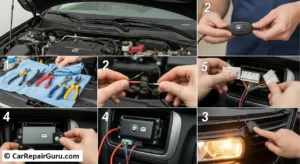
Installing a remote car starter may sound intimidating, but with the right tools, some patience, and a little know-how, it’s doable—especially for mechanically inclined car owners. While professional installation is always an option, this step-by-step guide is perfect for anyone interested in learning how to install a remote starter for car systems themselves.
⚠️ Note: Every vehicle is different. Always check your specific remote start system instructions and your vehicle’s wiring diagram before getting started.
Step 1: Gather Your Tools and Equipment
Before you begin, make sure you have:
- Your chosen remote car starter kit
- A wiring diagram for your vehicle
- Multimeter
- Wire stripper/crimper
- Electrical tape or heat shrink tubing
- Zip ties
- Screwdrivers and panel removal tools
- Soldering iron (optional, but recommended for secure connections)
Step 2: Disconnect the Battery
Safety first! Disconnect the negative terminal of your car’s battery to prevent any electrical shorts while working on the wiring. This also resets your ECU, so make sure you’re ready for any system resets.
Step 3: Locate the Ignition Wires
Access the ignition harness under the steering column. You’ll need to identify several key wires:
- Constant 12V
- Ignition 1 and 2
- Starter wire
- Accessory wire
Use your multimeter to verify each wire’s function—never rely solely on wire color charts.
Step 4: Install the Remote Car Starter Module
Mount your remote car starter module securely using zip ties or Velcro straps. Do not let it hang loosely under the dashboard—it could rattle or cause disconnection over time.
Connect the corresponding wires from the module to your car’s ignition harness. Solder or crimp securely, then insulate with heat shrink or electrical tape.
Step 5: Install the Bypass Module (if needed)
Most modern cars have factory anti-theft systems that prevent the engine from starting without a key. A remote start bypass module is needed to override this when using your remote starter for car operation.
Follow the bypass module instructions carefully—some require programming with a spare key, while others connect directly to your car’s data network.
Step 6: Connect the Parking Light and Brake Wires
These wires help the remote start system know when the car is running and when the brake is pressed. This ensures safety—your remote car starter will shut down if someone tries to drive without the key.
Step 7: Wire Keyless Entry (Optional)
If your system includes keyless entry, connect the door lock and unlock wires to the appropriate circuits in your car. Test this carefully—some vehicles use reverse polarity or data-controlled locking systems.
Step 8: Reconnect the Battery and Test the System
Once everything is connected:
- Reconnect the battery.
- Test each function: remote start, shut-off, lock/unlock, lights, etc.
- Listen for relays clicking and watch for the parking lights flashing to indicate success.
If the remote car starter doesn’t work, double-check your wiring and grounding. Troubleshooting guides in your kit can also help.
Step 9: Final Assembly
Tidy up your wiring using zip ties and tuck everything safely behind trim panels. Reinstall all dashboard pieces and test once more before hitting the road.
Final Tips
- Never rush. A quality install takes time.
- If you hit a wall, consult forums or consider switching to professional remote starter installation.
- Always check your remote car starter kit warranty—DIY installs can sometimes void it.
Installing your own remote start system is a rewarding challenge. With a bit of effort, you’ll enjoy the luxury of stepping into a comfortable car every time, no matter the weather.
Maintenance and Troubleshooting Tips
Once your remote car starter is up and running, it’s easy to forget about it—until something goes wrong. Like any electronic system, it needs a little attention now and then to keep performing at its best. Here are some quick maintenance tips and common troubleshooting fixes to keep your remote start system in top shape.
Regular Maintenance Tips
- Keep the Remote Clean and Dry
Moisture and dirt can affect your key fob’s signal. Wipe it down occasionally and avoid leaving it in extreme heat or cold. - Replace Batteries Annually
A weak remote battery is one of the most common reasons a remote car starter stops responding. Replace the battery every 12 months, or sooner if you notice range issues. - Check for Software Updates
If your remote start system uses a smartphone app or has advanced functions, check for firmware or app updates regularly. This helps prevent bugs and improves compatibility.
Troubleshooting Common Issues
- Car Doesn’t Start Remotely:
Make sure the car is in park, doors are closed, and the hood is latched. Most systems won’t start if any of these conditions aren’t met. - Signal Issues or Short Range:
Check the remote battery. Also, avoid interference from metal objects or electronics nearby. Try starting from a different location. - Keyless Entry Not Working After Start:
Some systems lock out keyless entry temporarily. Turn off the remote car starter, then try your key fob again. - Starter Suddenly Stops Working:
This could mean a blown fuse, wiring issue, or software glitch. If a reset doesn’t fix it, contact your installer or a professional technician.
Regular checkups and a little know-how go a long way in keeping your remote car starter smooth, safe, and reliable—season after season.
Conclusion
A remote car starter isn’t just a cool gadget—it’s a smart upgrade that adds comfort, convenience, and even a touch of luxury to your daily drive. Whether you’re starting your car on a freezing winter morning or cooling it down during a summer heatwave, a remote start system gives you full climate control before you even step inside.
From choosing the right model to deciding between DIY or professional installation, understanding the key features and maintenance needs helps you get the most from your investment. And with so many great remote starter for car options on the market in 2025, there’s something for every driver and budget.
In the end, installing a remote car starter isn’t just about starting your engine—it’s about starting your day with ease, confidence, and a whole lot more comfort.
FAQ
1. Are remote car starters safe for my engine?
Yes, a remote car starter is safe for your engine when installed correctly. In fact, many systems include built-in safety features such as automatic shutoff timers, engine monitoring, and brake override to prevent damage or misuse.
2. Can I install a remote car starter myself?
Yes, if you’re comfortable with vehicle wiring and have the right tools, you can install a remote start system yourself. However, professional installation is recommended for newer vehicles with complex electrical systems or factory anti-theft features.
3. Will a remote car starter void my warranty?
A properly installed remote car starter should not void your vehicle’s warranty. Under the Magnuson-Moss Warranty Act, manufacturers must prove that an aftermarket part caused the problem before denying coverage.
4. How much does it cost to install a remote starter for a car?
Installation costs vary based on the system’s complexity and your vehicle type. On average, professional remote car starter installation ranges from $150 to $500, including labor and parts.
5. Can I use a remote car starter with my smartphone?
Yes! Many modern remote start systems offer smartphone control through apps, allowing you to start, lock, and locate your vehicle from anywhere with a cellular connection.
